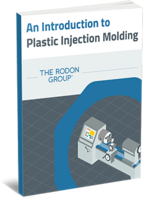Sensors / Detectors / Transducers
Pulse Radar Sensors feature target tracking technology.
Press Release Summary:
Providing standard output of 4-20 mA, PR Series operates using frequency burst at 6.3 GHz, delivering non-contact level measurement in challenging environmental conditions. Units offer detection range up to 100 ft, resolution to 0.22 in., and accuracy to ¼% of max range. Sensors automatically adjust transmit power and receive gain to optimize return signal to level that delivers accurate readings. Utilizing electromagnetic waves, sensors are unaffected by interference.
Original Press Release:
Automation Products Group Introduces Pulse Radar Sensors with Unique Self-Adjusting and Target Tracking Technology
Optimizes sensor signal for accurate, reliable target tracking through a variety of application conditions
LOGAN, UT - Automation Products Group, Inc. (APG) introduces the PR Series Pulse Radar Level Sensors. Pulse Radar sensors deliver accurate, reliable non-contact level measurement in challenging environmental conditions that can reduce the reliability and accuracy of other types of sensors, such as ultrasonic sensors. Providing the process industry standard output of 4-20 mA, the sensors operate using a frequency burst at 6.3 GHz.
Pulse Radar sensors provide a detection range up to 100 ft. (30 m), resolution to 0.22 in. (5.7 mm) and accuracy to ¼% of maximum range. The standard operating temperature range is -40 to 140°F (-40 to 60°C), with higher temperature ranges available on special order.
"The primary advantage of APG's Pulse Radar sensors is the unique self-adjusting-signal and target-tracking technology. This technology enables the sensor to automatically keep the signal at an optimal level to maintain and track the target throughout the measuring range, and under a variety of target conditions," says Jon Cox, Automation Products Group Product Manager.
Pulse Radar sensors will operate over long distances even with target materials that have moderately low dielectric constants. The sensor automatically adjusts the transmit power and receiver gain to optimize the return signal to a level that delivers accurate readings, and is not affected by any interference. The sensor is designed to overcome potential build-up on the antenna, and avoids obstacles that may be installed near the detection path. They also offer reliable operation in metal stilling wells. Programmable software allows users to mask unwanted echoes and adjustable damping factors.
"Because Pulse Radar sensors use electromagnetic waves rather than sound waves, they are an ideal level sensing solution in applications with excessive foam. Electromagnetic waves are also unaffected by heavy fumes or vapor layers that can reflect ultrasonic signals, resulting in false readings. Additionally, highly corrosive or acidic materials can attack and break down the bonds inside an ultrasonic transducer, and because radar waves are transmitted through an antenna of solid material, Pulse Radar sensors are unaffected by such media," says Cox.
Powerful electromagnetic waves also enable Pulse Radar sensors to shine in vacuum environments, as well as applications with rapid temperature changes, high temperatures and high acoustical noise, and those with long measuring ranges.
About Automation Products Group
Automation Products Group, Inc. (APG) was originally a division of Scientific Technologies, Inc. (STI). In September 2006 Omron Corporation acquired the safety products business of STI, and APG was formed and purchased by the family that founded STI. Although a new company, APG's roots in the sensor business go back to 1971. Located in Logan, UT, APG supplies tailored sensing solutions for measurement applications to process control industries.
Automation Products Group, Inc., 1025 W. 1700 N., Logan UT 84321; toll-free: 1-888-525-7300; (435) 753-7300; fax: (435) 753-7490; E-mail: sales@apgsensors.com, Web site: www.apgsensors.com.




